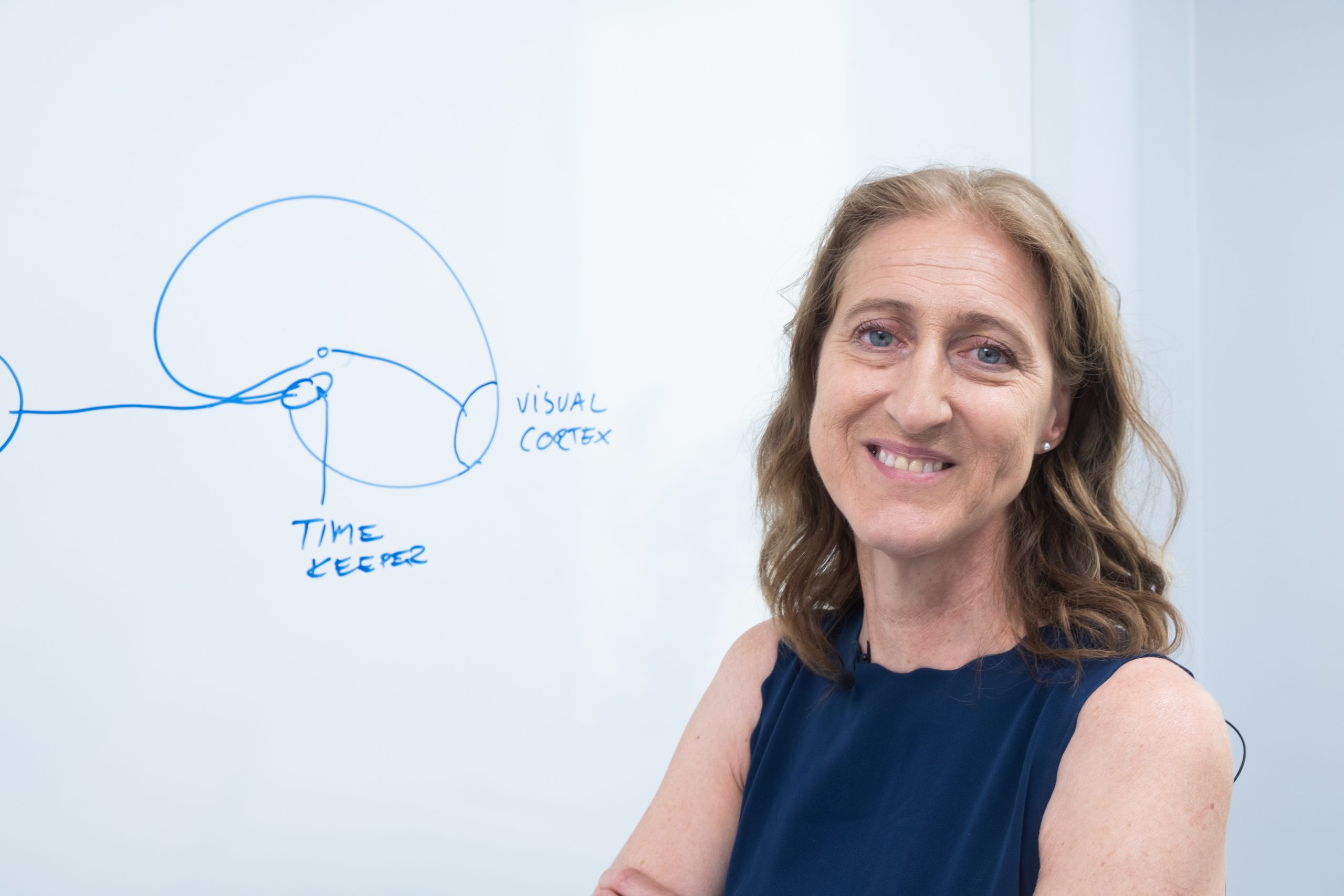Science never sleeps, research goes on all day, every day. Thus a science based company like BrainLit must always keep up with the latest scientific findings, or risk becoming obsolete. For this reason, since the company was founded, it has developed its product around the advice provided by its scientific advisory board, tasked with keeping management updated and finding new ways to implement the technology.
Madeleine Selvander is one of the members of the scientific advisory board. As an ophthalmologist and former eye surgeon, she literally knows the workings of the human eye from the inside out. Not to mention how it is affected by light and what impact this in turn has on the rest of our biology.
– BrainLit’s technology is based on two different aspects of science. On the one hand, the technological base of LED lights, optics and nano technology to produce short wavelength light and recreate daylight conditions indoors. On the other hand, how our bodies react to the light gathered in our eyes, and our ability to analyse this, explains Madeleine Selvander.
Less than 20 years ago a new kind of photoreceptor cell was discovered in the human eye. The ipRGCs cell is a special type of ganglion cell found in a deeper level of the eye than previously imagined. This type of cell reacts to blue wavelength light, around 480 nm, and control our circadian rhythm.
Adapting to individual chronotypes
– Indoor luminaires, for example lightbulbs, halogen lights and fluorescents, produce very little light with these wavelengths. When we lack this stimulus, we lose our sense of day or night. A day and a night equals 24 hours, but most people have a circadian rhythm slightly longer than 24 hours, so we need the light to set our rhythm or it will start lagging. For office workers, this means that they become evening persons, but still have to get up early in the morning and suffer from sleep deprivation, says Madeleine Selvander.
– We investigate scientific research that may become relevant for BrainLit and discuss new ways to implement scientific findings.
This is the foundation of BrainLit’s technological vision; providing indoor light with the quality of natural outdoors light and thus resetting our circadian rhythms instead of letting workplace conditions gradually wear us down. For Madeleine Selvander, who is not only an ophthalmologist but also has an engineering background, her first contact with BrainLit seemed determined by fate.
– I met Peter K Andersson, who was then the CEO of BrainLit, and he mentioned something about light and how it affects us. To be honest, I was very skeptical, but also intrigued and curious. If I was unaware of this, the same had to be true for many others as well. So I became persistent in telling them they needed help from someone younger – and maybe from a woman, she laughs.
Today, she is one of the experts of the scientific advisory board. Klas Sjöberg, chief physician of gastroenterology at the world renowned University of Lund is the chairman and summons the board every six weeks. The other members are Thorbjörn Laike, professor of environmental psychology, Lennart Minthon, professor of clinical memory research, Lars Samuelsson, professor of semiconductor electronics and Tord Wingren, the founder of BrainLit, who contributes in all areas from his unique perspective and vision.
Aligning research and technology
– We investigate scientific research that may become relevant for BrainLit and discuss new ways to implement scientific findings. Often BrainLit has technological solutions that may be used in research, but no one has yet done that research. For instance, BrainLit has the patent and the technological solution for personalized light conditions, but the research on how personalized light differs from standard light is currently quite limited. This is mostly due to the problem of the individual variations and the challenge to get accurate data of the actual light they are exposed to, says Madeleine Selvander
Sometimes the technology is ahead of the science. In this case the scientific advisory board acknowledge the possibility to accelerate research by offering researchers the use of BrainLit’s technology to get more accurate data. But despite the wide areas of expertise gathered in the board, there are still subjects that need further exploration.
– We will invite experts in chronobiology and how our biology is affected by the circadian rhythm and BioCentric Lighting. Together, we have a more than basic understanding of the functions, but to have access to truly deep knowledge of this intricate relationship… That would be so interesting! Madeleine Selvander concludes.


